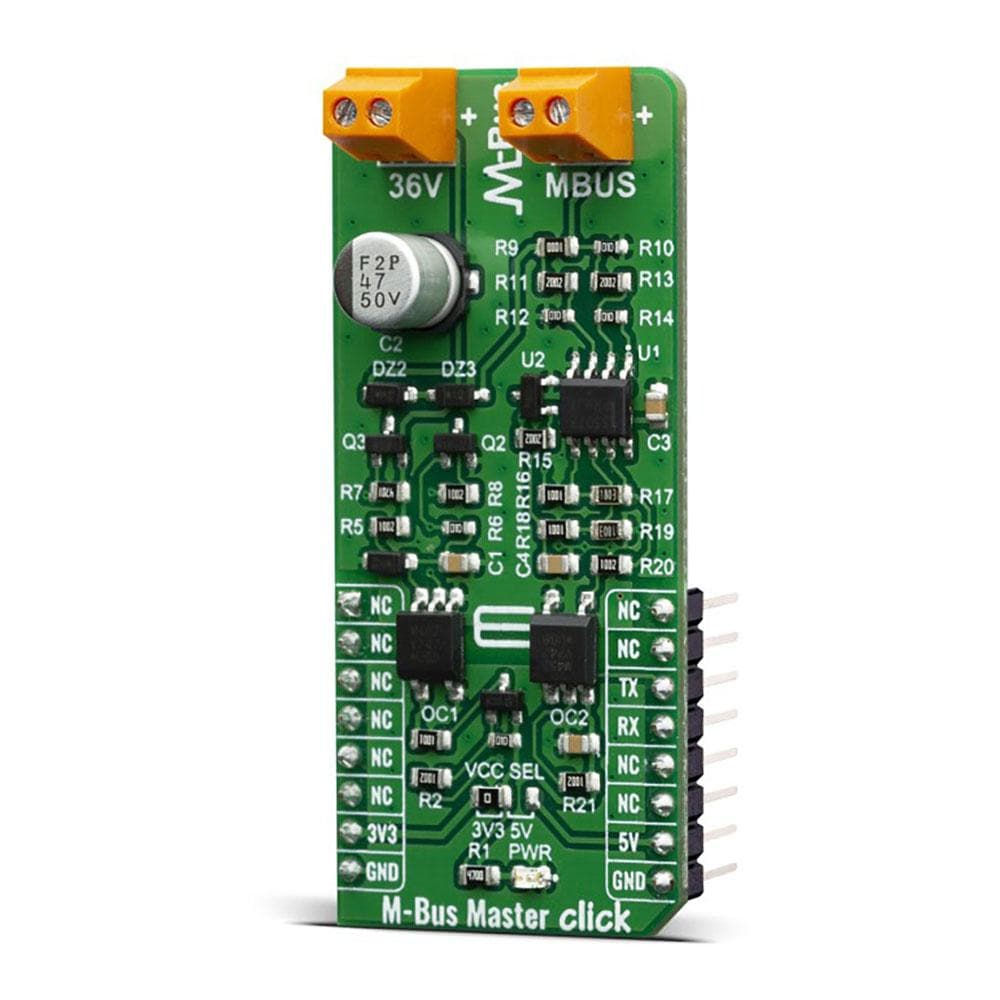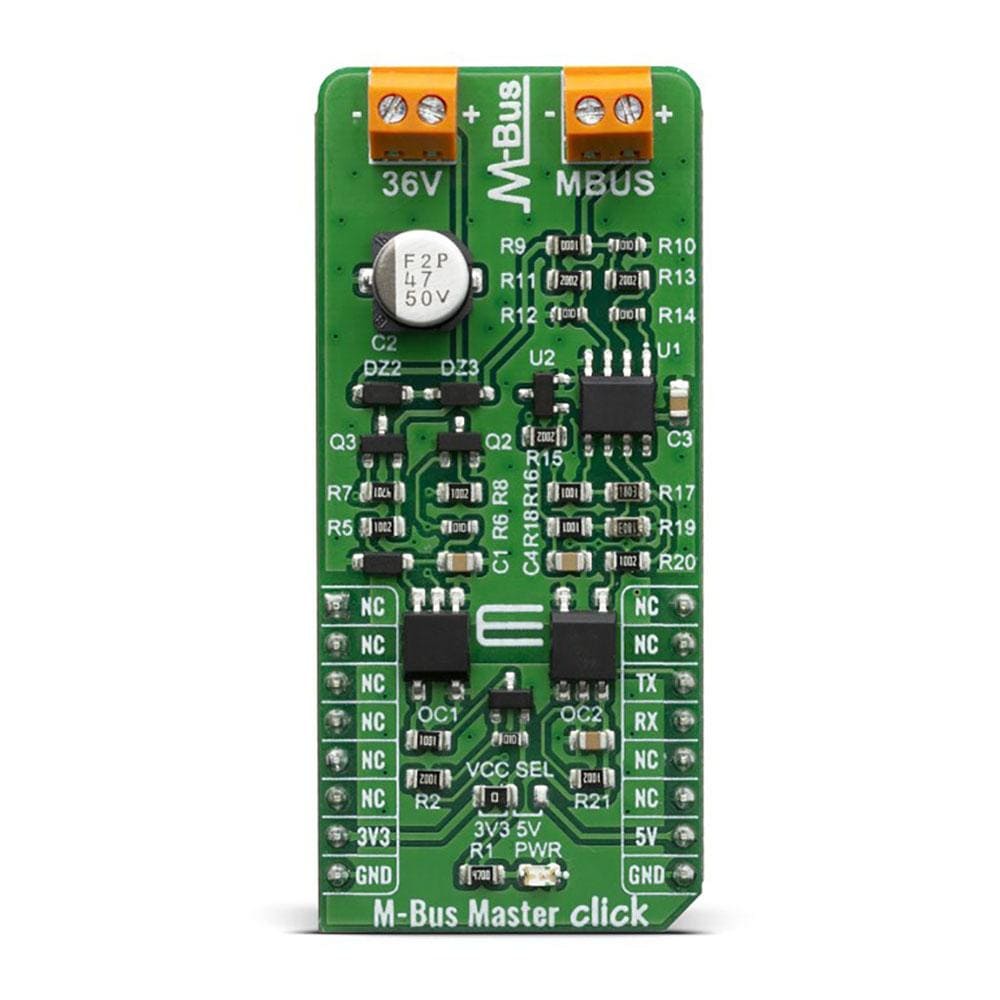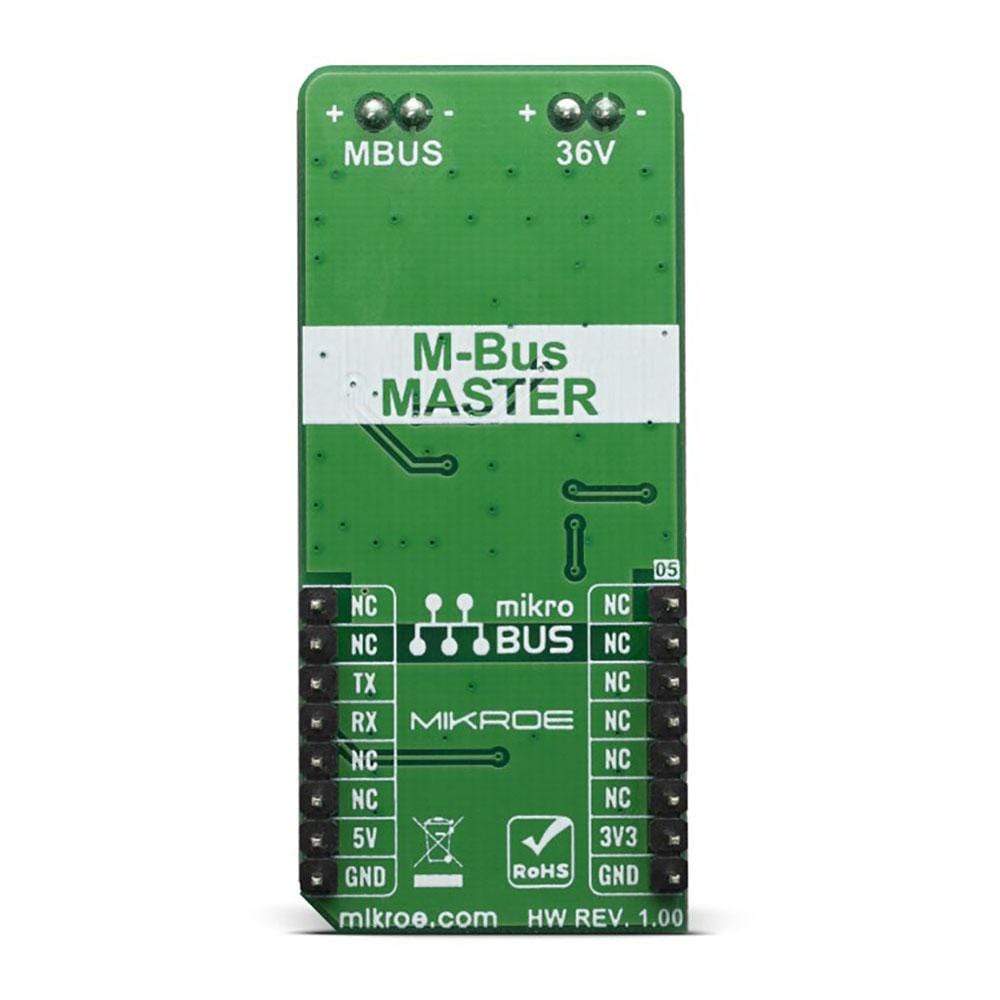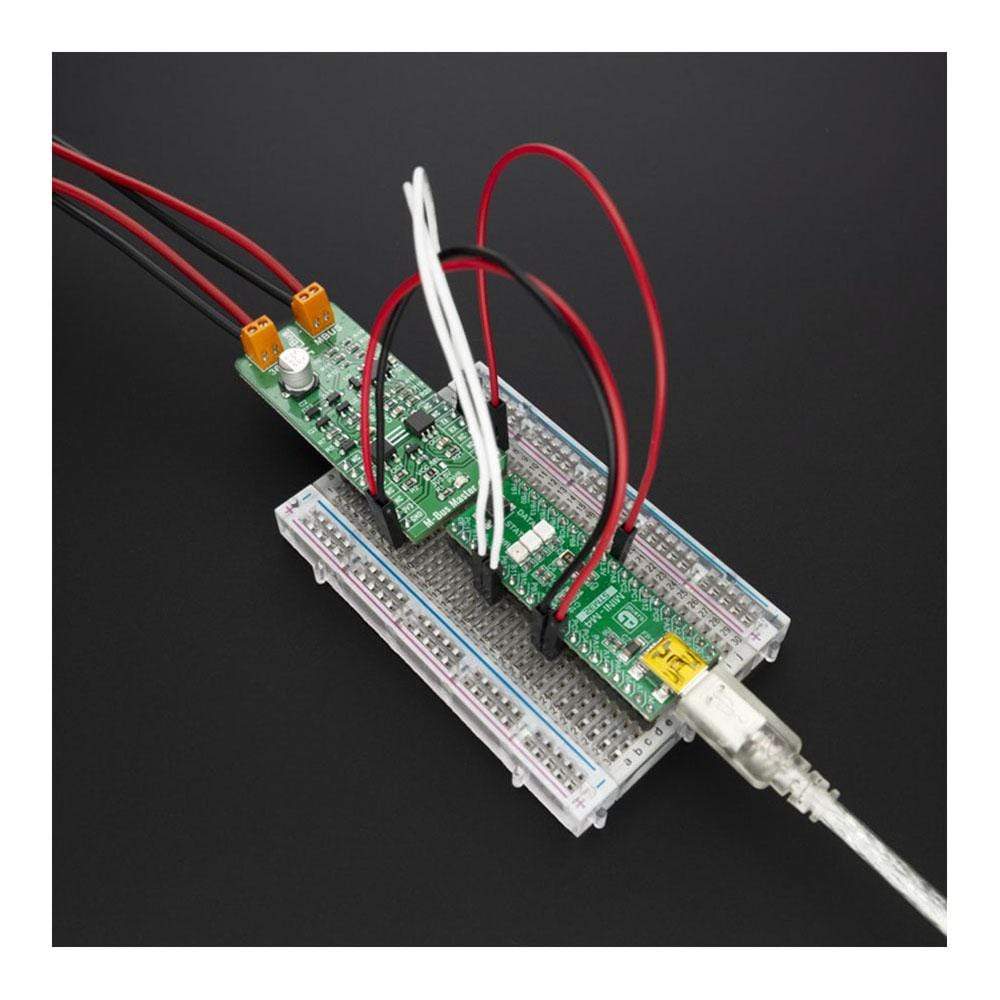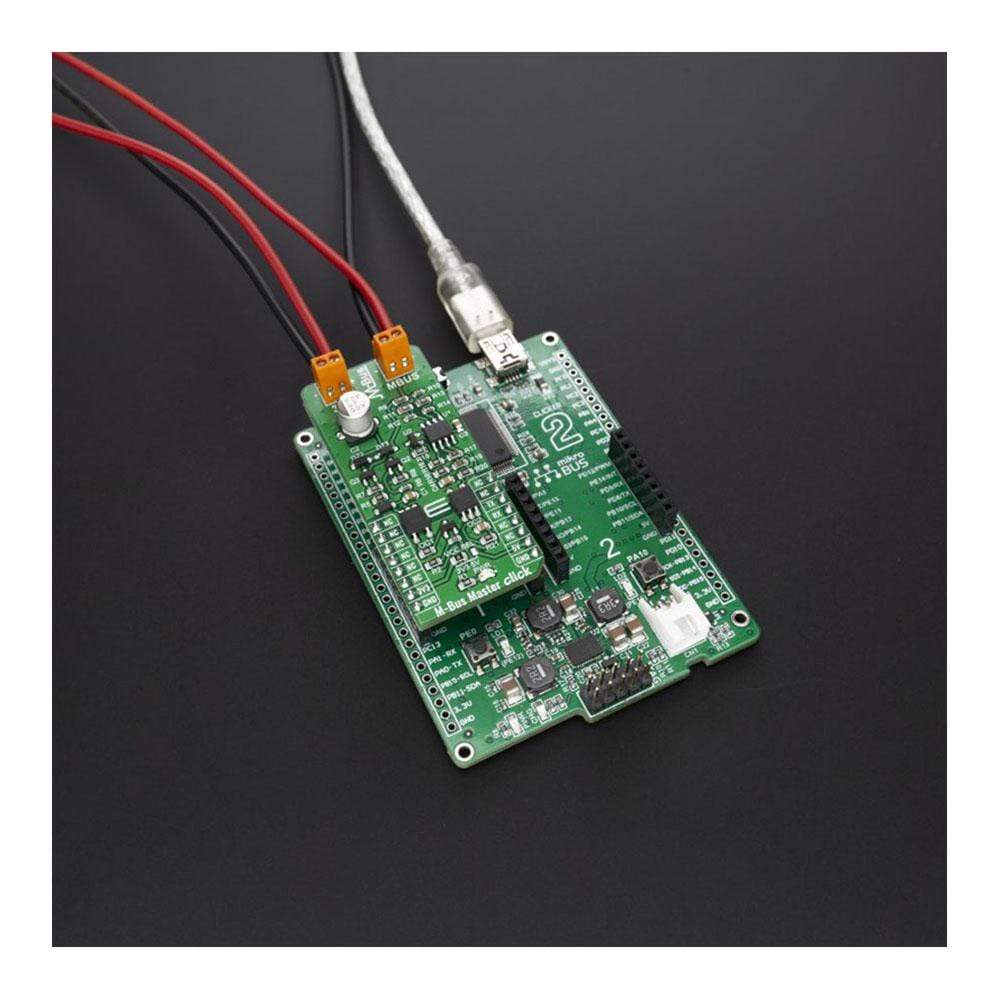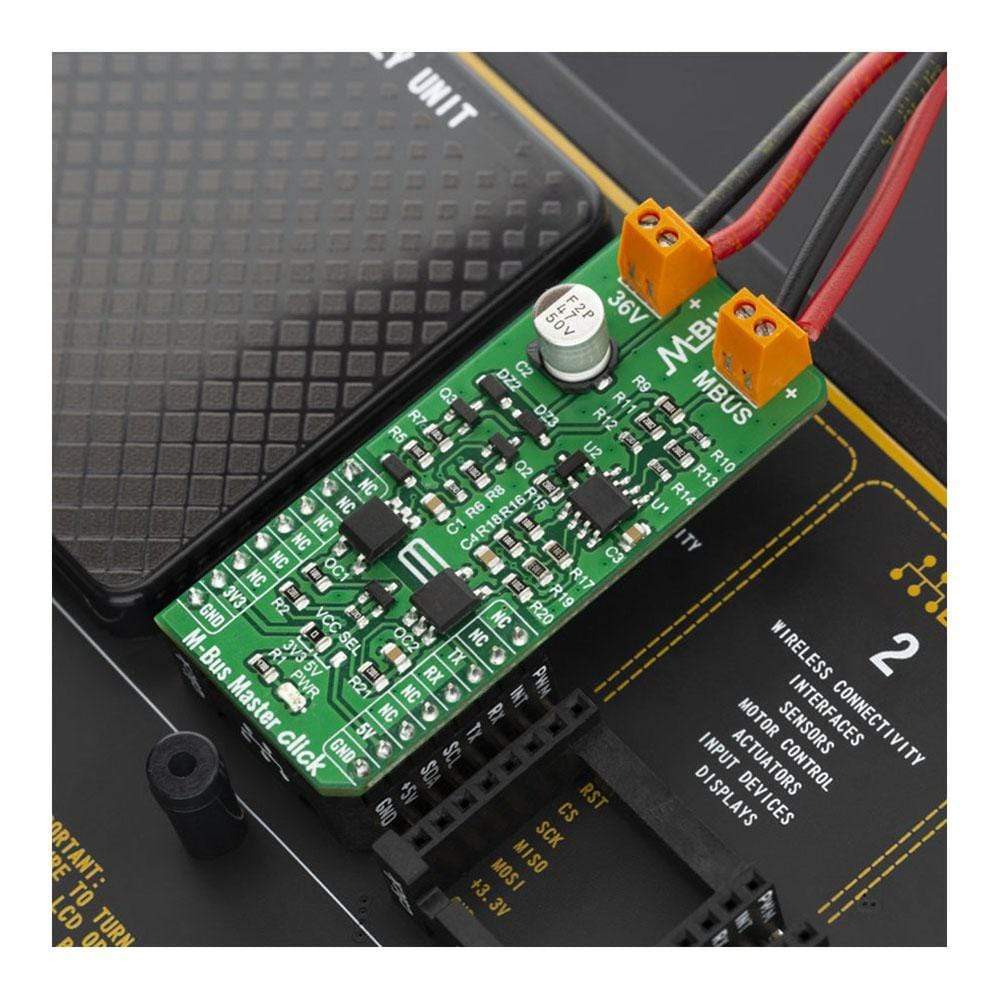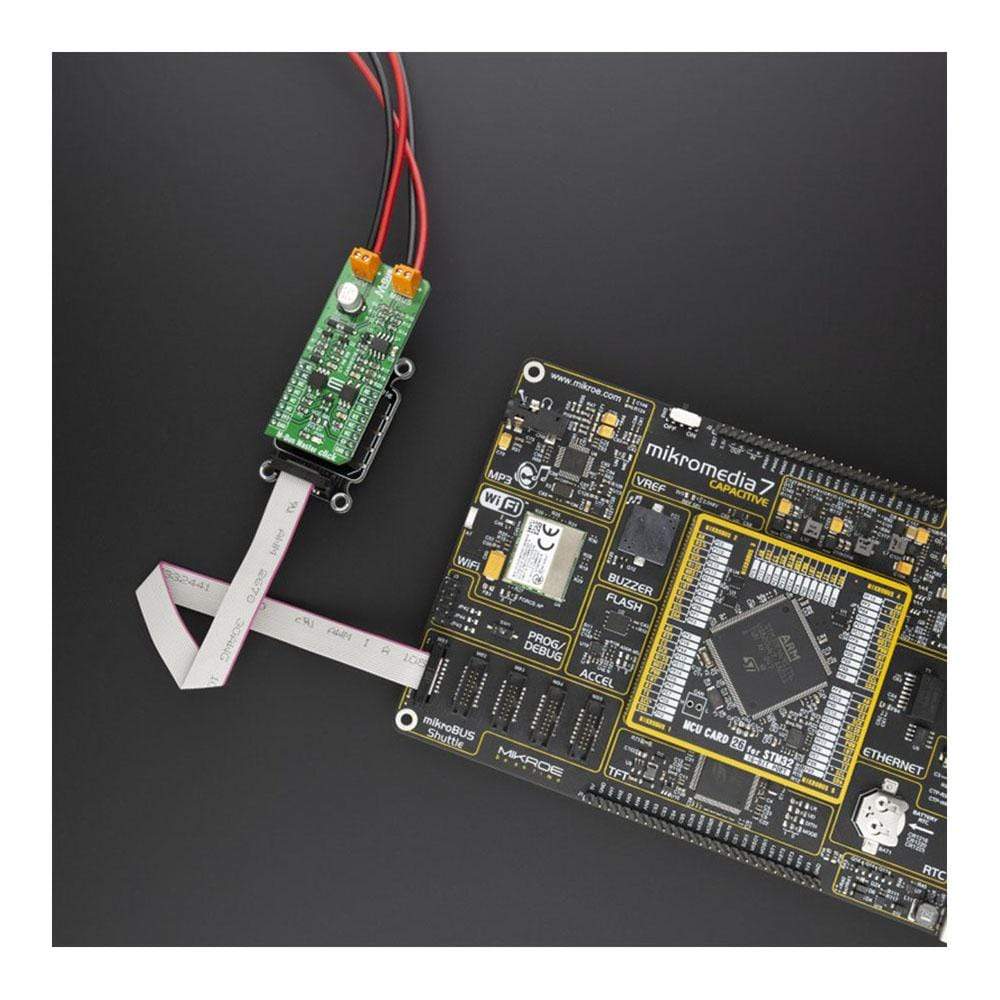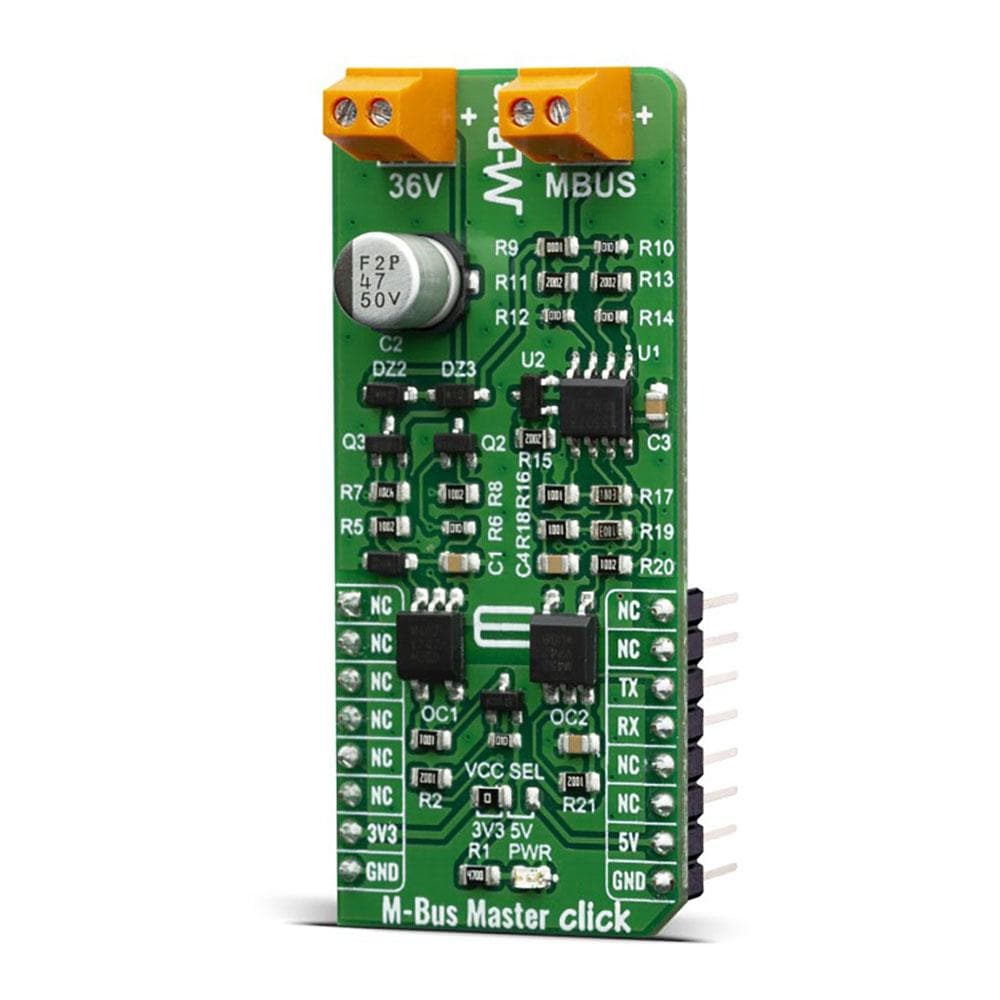
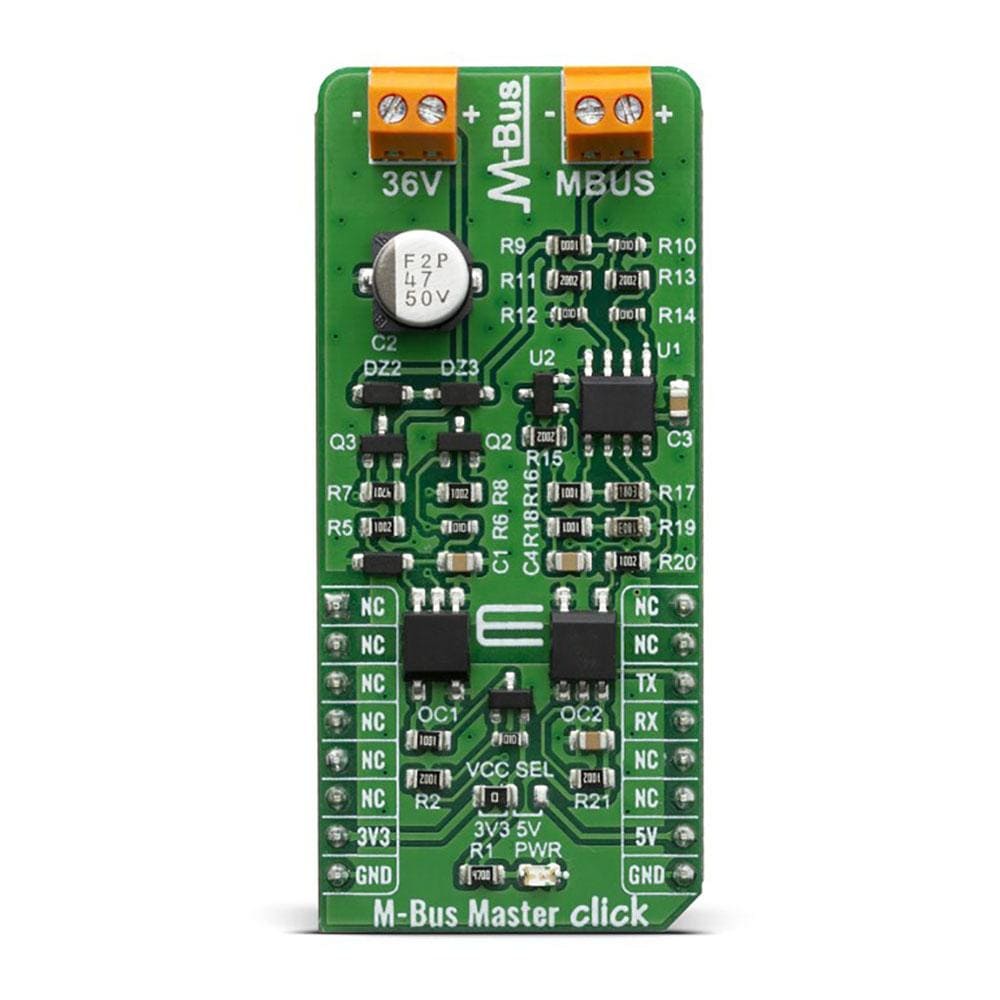
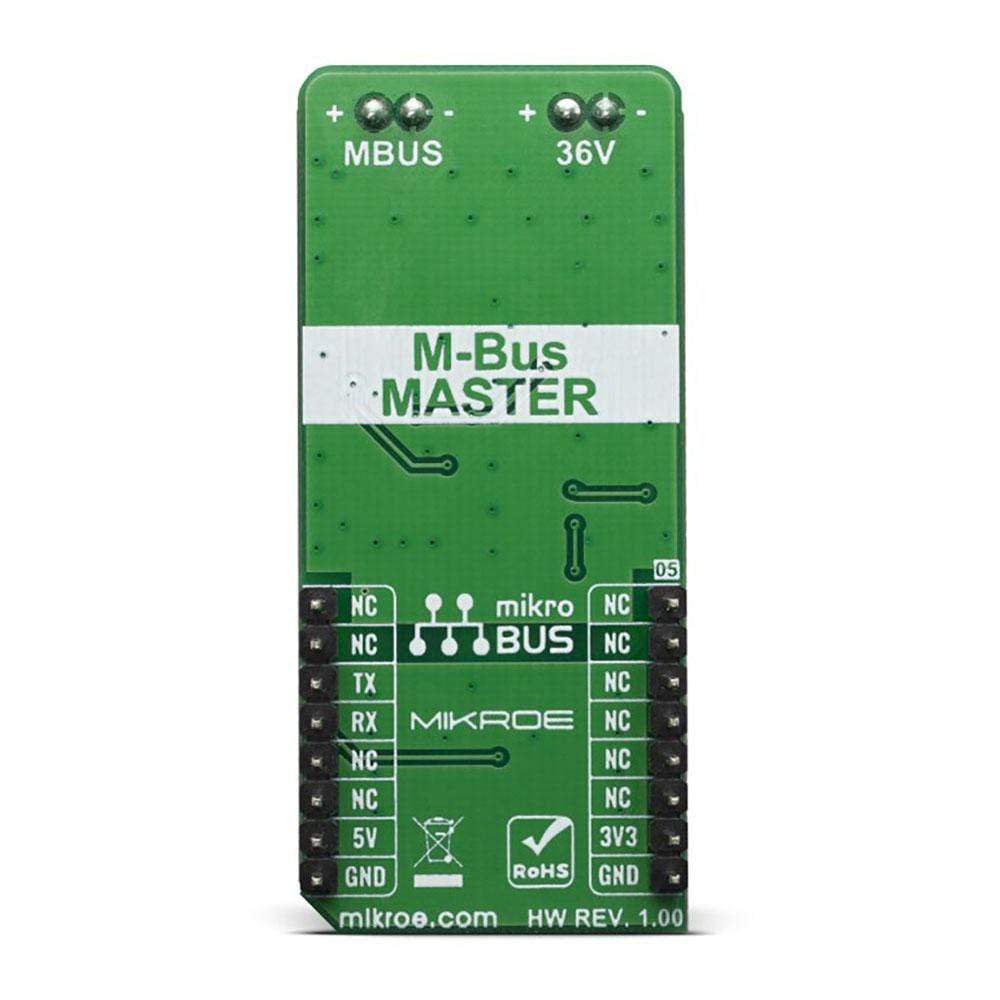
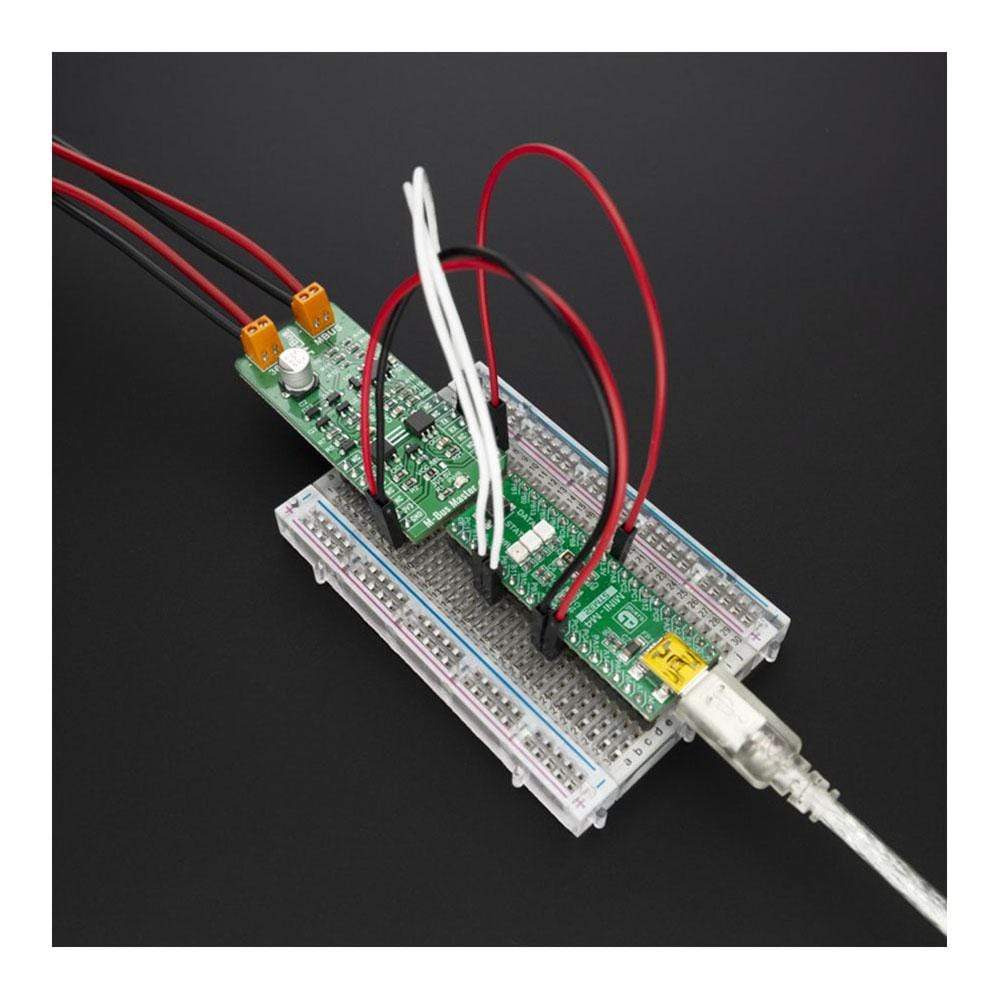
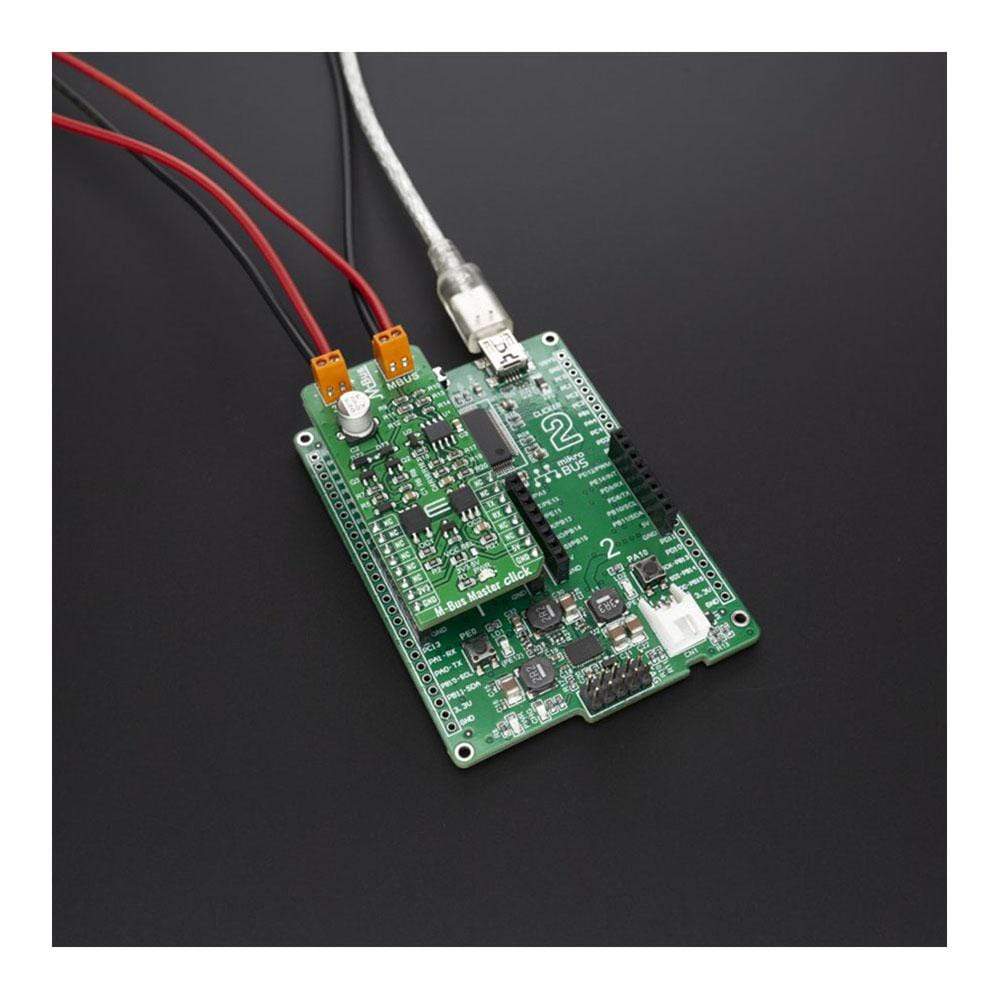
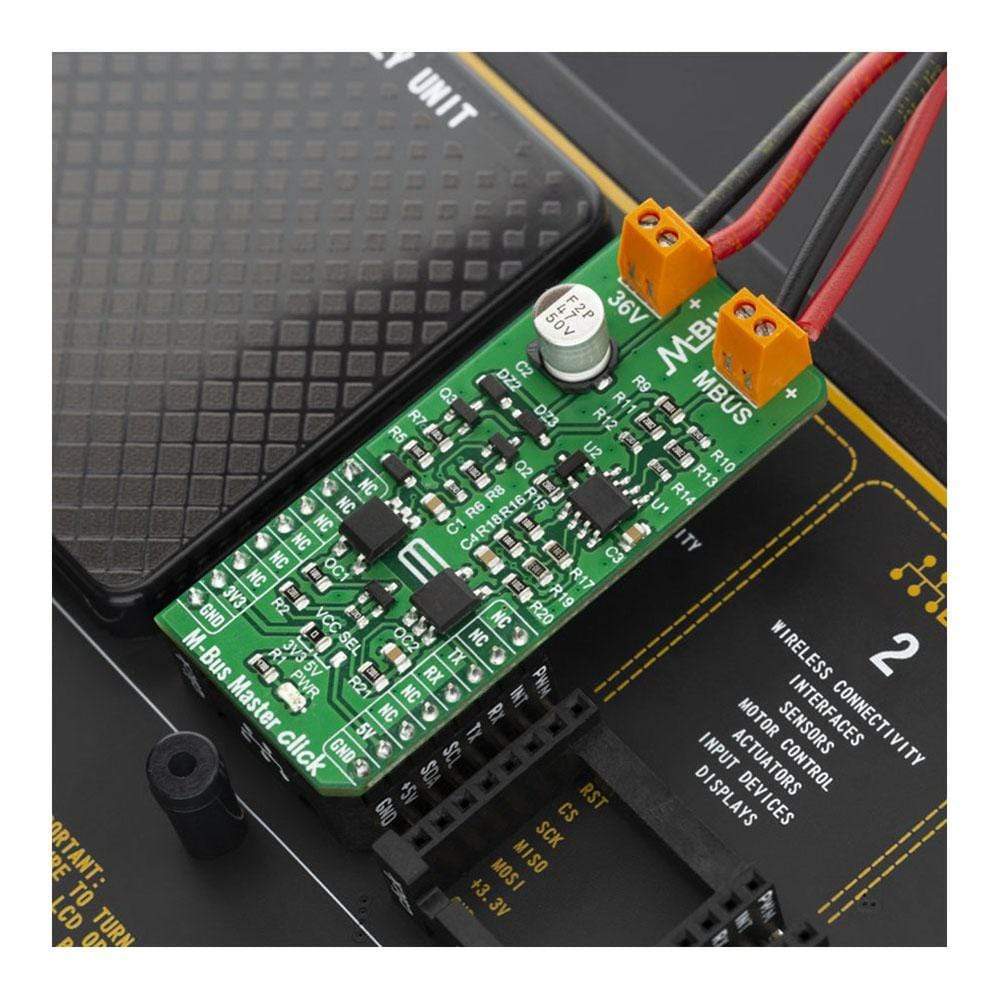
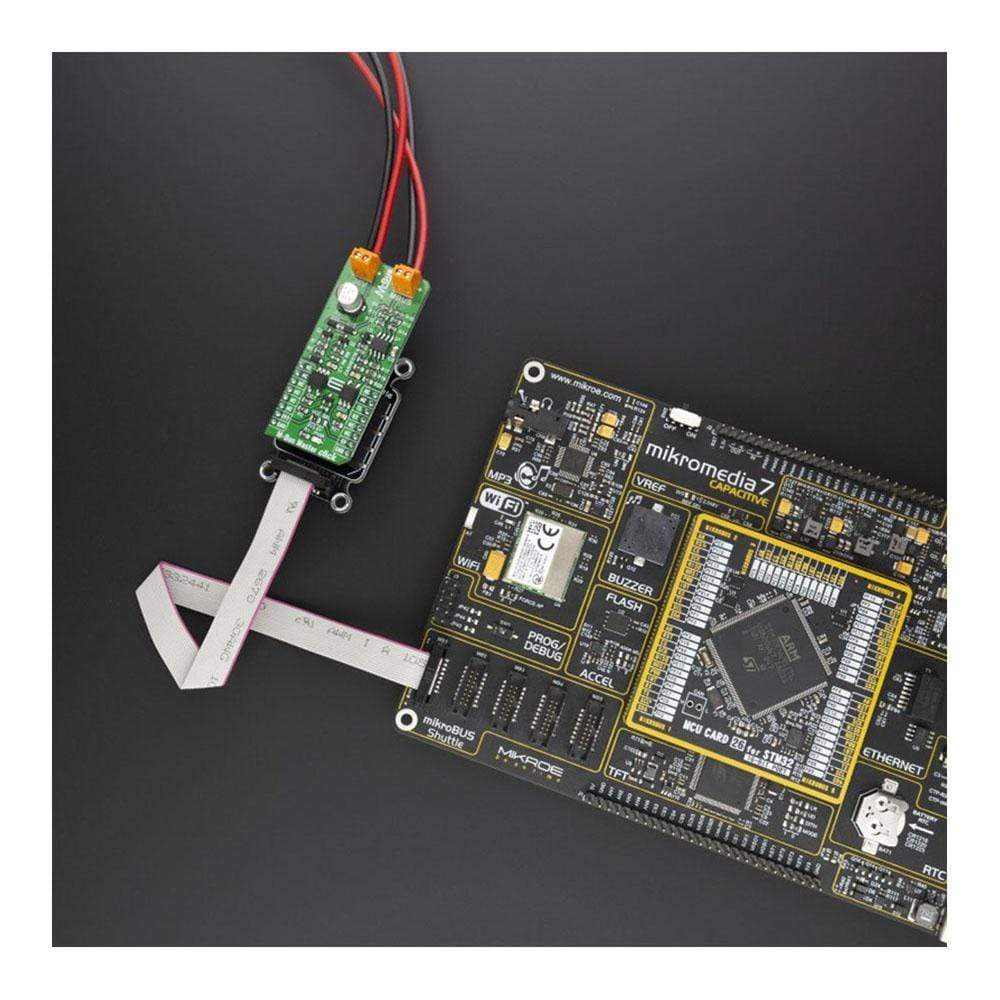
Overview
The M-Bus Master Click Board™ is a complete solution for a master node in M-Bus networks. The M-Bus ("Meter-Bus") is a new European standard for remote reading of meters and it is also usable for all other types of consumption meters as well as for various sensors and actuators. Given all the features these elements offer, the M-Bus Master click can be used for low-cost applications, and low voltage, MCU based single supply applications.
The M-Bus Master Click Board™ is supported by a mikroSDK compliant library, which includes functions that simplify software development. This Click Board™ comes as a fully tested product, ready to be used on a system equipped with the mikroBUS™ socket.
Downloads
Le M-Bus Master Click Board™ est une solution complète pour un nœud maître dans les réseaux M-Bus. Le M-Bus (« Meter-Bus ») est une nouvelle norme européenne pour la lecture à distance des compteurs et il est également utilisable pour tous les autres types de compteurs de consommation ainsi que pour divers capteurs et actionneurs. Compte tenu de toutes les fonctionnalités offertes par ces éléments, le M-Bus Master Click peut être utilisé pour des applications à faible coût et des applications à alimentation unique à basse tension basées sur MCU.
La carte Click Board™ M-Bus Master est prise en charge par une bibliothèque compatible mikroSDK, qui comprend des fonctions qui simplifient le développement logiciel. Cette carte Click Board™ est un produit entièrement testé, prêt à être utilisé sur un système équipé du socket mikroBUS™.
| General Information | |
|---|---|
Part Number (SKU) |
MIKROE-3880
|
Manufacturer |
|
| Physical and Mechanical | |
Weight |
0.02 kg
|
| Other | |
Country of Origin |
|
HS Code Customs Tariff code
|
|
EAN |
8606018719310
|
Warranty |
|
Frequently Asked Questions
Have a Question?
Be the first to ask a question about this.

